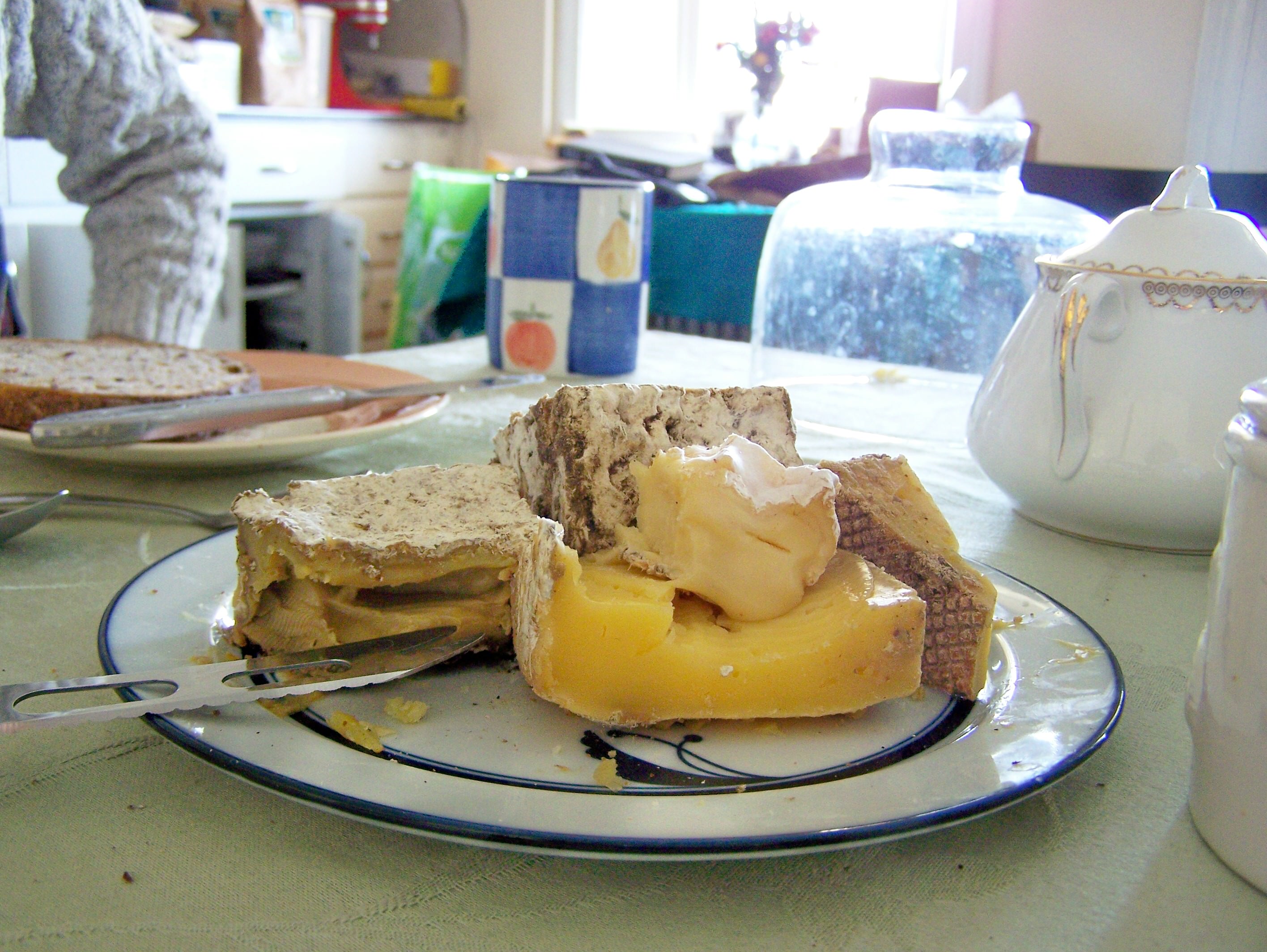
The first time I tasted cheese from the Bobolink Dairy & Bakehouse, I was stunned. I had never tasted cheese like this that wasn’t, well, from Europe. I know that sounds snobbish, but I love cheese, and I’ve tasted a lot of it, all kinds. This cheese was…something else.
Earthy, creamy, complex, with a bit of tang, and something more. It wasn’t a copy of some European cheese, like an American-made brie or such. It was its own cheese, with its own personality.
After regaining my power of speech, I looked up from the cheese to Jonathan White, standing proudly behind his cheese, smiling. Questions rushed into my mind: Who are you? Where did you come from? And please tell me you’re not too far away and I’ll be able to buy more of this cheese.
Moving on down
In fact, Jonathan, and his wife and partner, Nina, resided at the time on a leased farm up in Vernon, New Jersey. They had been producing their excellent cheese for eight years at that site but were looking for their own land.
With the help of the Hunterdon Land Trust, they were able to do a simultaneous preservation and purchase of the Stamets Farm in Milford, New Jersey, which has been farmed by just two families since the American Revolution.
In the spring of 2010, they moved their herd and all to the new farm. There the Whites raise almost 50 cows on 184 acres of clean, natural pasture. No pesticides, no GMO grains, no antibiotics, no hormones, no nuthin’.
The cows spend most of their time in the pastures, eating rich millet, wildflowers and grass, and fertilizing the fields at the same time. They are milked once a day in the morning, then go back out to pasture.
They are allowed to suckle their calves, which results in less milk to make cheese, but which is healthier and more conducive to a longer life for the cow. Commercially raised cows, who spend their days in milking sheds, live an average of 2.9 years. Pastured cows can live over 15 years. Two of the Whites’ cows, Flora and Liberty, are 16 and 17 years old respectively. Not a bad life.

The Whites are quite happy with this arrangement. Their goal is to run a completely sustainable farm. So, for instance, the large amounts of whey that are a by-product of the cheese making process go to feeding their hogs. Chickens are kept on the farm not just to provide eggs, but to eat the flies that are always hanging around a dairy barn.
Jonathan, a former software engineer, applies his talents now to improving the systems around the farm – like finding a type of millet that has more leaves and less seeds, or cross-breeding the cows. The former to reduce the chance of E-coli entering the water table, the latter because most dairy cows today were bred to stand in a milking shed all day, not roam in pastures.
Really American cheese
Jonathan began making cheese in the late 1980s as a hobby. He had learned to love cheese as the cheese buyer for the Hoboken Co-op in the 1970s, and then later when his work took him to England.
In the early 1990s, he began making cheese professionally using industrially-produced milk. But he really wanted to use milk from 100 percent grass-fed cows. It was time to become a farmer. The family moved to Vernon and bought their first dairy cows, using their own raw milk to make exceptional cheeses.

“What kind of cheeses do they make?” asked my friend, Lauren, when I told her about Bobolink. Um, how do I answer that question? I thought. She probably expects an answer like cheddar or Gouda.
Many Americans are at least somewhat familiar with different cheeses, knowing that Velveeta is “bad,” and anything aged is “good.” But how can I begin to explain Bobolink’s cheese?
What I’ve learned is that a cheese comes from its place – its terrain, its grass, its climate and the animals that live in all that, what winemakers refer to as terroir. Perhaps most of all, a cheese comes from its history.
This is the challenge American artisanal cheese makers have had to overcome in selling and marketing their cheese. How can – and why should– you make a copy of a cheese that’s been made for centuries in France, or Italy, or England? Why not make something unique to this land?

So what kind of cheese does Bobolink make? Small round ones, like Amram and the Tower of Bobol, which are made in the spring and fall, when there is less milk from the cows.
Or Baudolino, a soft-ripened cheese, that varies in firmness and taste depending on the season (like when the cows are eating wild garlic). Then there is Drumm, mostly firm and a little crumbly, with a rich flavor.
Jean-Louis, one of my favorites, is very grassy and can only be made in the late spring and early summer when there is plenty of milk to fill the large molds. It’s soft in the inside, like brie, and firmer towards the rind.
All of Bobolink’s cheeses are made from raw milk – which is not homogenized or pasteurized. The latter is particularly important since pasteurization entails boiling the milk, which kills all bacteria, including the good kind that makes flavorful, intense cheese, unique to its place and the time of the year.
Because the cheese is made from raw milk, by federal law it must age for at least 60 days. Most of Bobolink’s cheeses age longer, up to 24 months, kept in their cheese cave, a refrigerator kept at 55 degrees or colder.

Baking it up
Cheese is made every day at the farm with milk from that day’s milking of the cows. As is bread, another Bobolink product. Nina is the baker. She began baking as a child, and when the cheese business began to pick up, she baked artisanal, whole grain breads to “go with.” Except the breads started selling as well as the cheese, and so their bread business began.
At the front of the renovated barn is a wood-fired brick oven which reaches temperatures over 600 degrees. A computer screen sits beside the oven, covered in flour dust. It gives Nina data about the oven, a graph representing varying temperatures.
“The oven dictates how much of what kind of bread we’ll make,” she explains. She tries to balance the oven’s mood with that of her customers’ wants.
The most popular breads? The ciabattas – which come in many variations. Plain, cheese, olive onion, and roasted garlic with duck fat. Nina experiments with different grain flours, adding variety that way instead of mixing in seeds, like other bakers. To learn more about Nina’s baking, see our previous post and video.
You can taste and buy Bobolink’s cheese and bread, along with yogurt, butter, and meat products in season, at their market on the farm.
Be sure to also go on the tour, and meet the cows. The farm is very kid-friendly too, so bring them along. You can also buy Bobolink’s products at several farmers’ markets in New Jersey and New York City, and online at their website, www.cowsoutside.com. The farm is located at 369 Stamets Road, Milford, New Jersey.
This article was originally published in Bucks Life magazine.
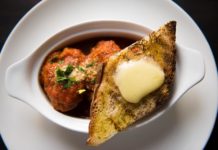
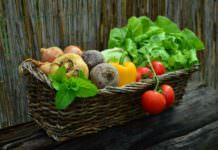

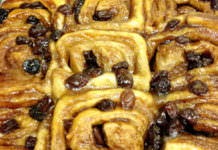
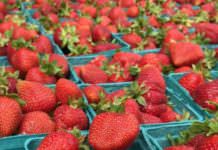
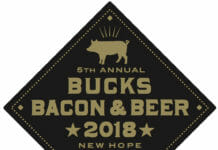
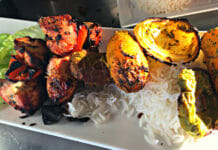
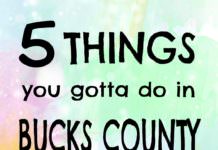
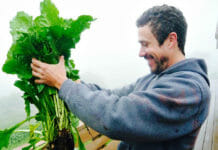
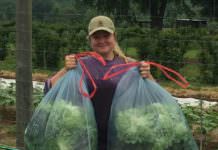
![What we’re reading [Oct 16 2017]](https://www.buckscountytaste.com/wp-content/uploads/2017/10/coffee_macbook_reading_pexels-photo-414630-218x150.jpeg)
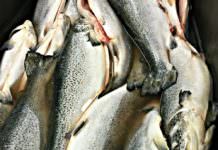
Great article….love cheese, love your article!
[…] to an embarrassment of cheese riches, Bobolink Dairy & Bakehouse is offering their grand reserve 2013 Drumm and Jean-Louis at a significant discount of 25% off. […]
[…] more about local artisan cheeses here. Also, see our map of local cheese makers in Bucks, Hunterdon and Mercer […]